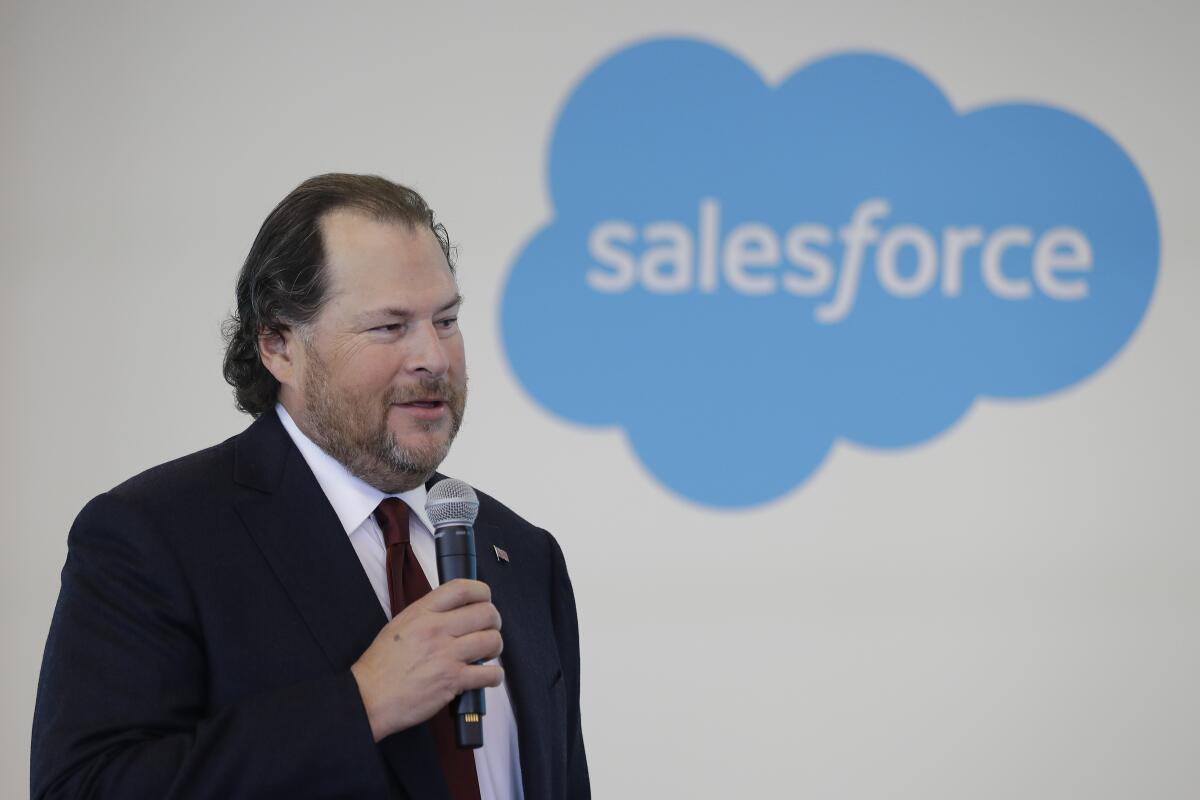When bad customer service becomes a business opportunity

Customer support has become a crowded battlefield in enterprise technology as software vendors such as Microsoft Corp. and Salesforce.com Inc. rush to arm organizations with tools to create one-stop service centers.
The attention is on revitalizing the call center, a once-backwater unit that has long suffered from high turnover rates and minimal corporate investment.
Salesforce, ServiceNow Inc., Twilio Inc. and Genesys Cloud Services Inc. are among the companies that see the call center as a critical part of efforts to transform the consumer base from a sea of faceless pocketbooks to potentially millions of unique personas. It’s viewed as a way to improve customer service and bolster brand loyalty at a time when businesses are increasingly worried about churn.
Zoom Video Communications Inc. was prepared to fork over $14.7 billion in stock to buy Five9 Inc. to gain a foothold in the contact center industry. But Five9 shareholders ultimately thought the price was too low and turned down the deal, a testament to just how much the sector is expected to grow in the coming years.
“Instead of being a cost center, it’s a lifetime value driver,” said Vasili Triant, chief operating officer at UJET Inc., a San Francisco-based call center cloud software provider. As a result, “this space has drawn a lot of attention. Companies need to improve experience. Because of that, a lot of money has flown into it. When money flows into it, people see a huge opportunity.”
Historically, customer support software was viewed as a money pit — systems that were necessary to help field consumer complaints or inquiries but produced little return on investment. Many businesses simply wanted to pick a product, deploy it and forget about it. As a result, the market was fragmented among just a handful of top vendors, including Genesys, Cisco Systems Inc. and Avaya Inc.
But as more companies move those systems to the internet, that mindset is undergoing a seismic shift.
A new survey finds that consumers are fed up with endless telephone wait times and glitchy automated menus. Why aren’t companies listening?
For the last several years, the focus has been on helping call center agents provide better customer support and cut down on service times. That has meant taking steps like consolidating different applications onto a single desktop interface, alleviating the need for agents to toggle between different tabs to view customer data stored in various places.
The future is centered on artificial intelligence. Call center software providers, including Genesys, Amazon Web Services and Five9, tout investments in natural language processing, a type of AI focused on empowering machines to understand how humans communicate, including interpreting conversations and analyzing them for sentiment.
The goal is to tap the technology to power software that can automatically provide insights on customers for agents during calls to improve communications. While some of that capability is available with existing products, it will be several years before it’s fully operational.
“A lot of people are realizing this is one of the biggest, if not the biggest, unclaimed pot of gold out there,” said Gustavo Sapoznik, chief executive officer of Asapp Inc., one of those startups focused on the area. “The big opportunity is to elevate human performance, to make the people working these jobs much better by building technology that allows them to.”
But the broader vision is much more grandiose. A glut of providers, including Salesforce, Microsoft, Zoom, Zendesk Inc., Adobe Inc. and ServiceNow, are pitching a future that goes beyond the call center to one focused on providing a better customer experience regardless of how they interact with a business.
“Right now, there’s a lot of different competitors coming into this market from different angles,” said Gartner analyst Drew Kraus. “It will almost certainly go through some type of market consolidation. But for now, more people are getting in than getting out.”
The goal is to make it easier to share data among a variety of programs, like those managing the website, customer relations, marketing, e-commerce and social media.
For customers, such a system would enable more seamless interactions with businesses. An individual could be talking to an agent on the phone, decide to switch to an online chat, and have the history of the previous discussion carry over.
“The whole notion of having a contact center whose entire focus is about limiting interactions with customers because that’s a cost, that is being challenged,” said Simonetta Turek, the general manager of Twilio’s call center product, Flex.
And for companies, storing that information within one system — what vendors are increasingly refer to as a customer data platform, or CDP — would enable them to run analysis and glean deeper insights into their customers.
Calls to many businesses now result in recordings about “unusually high call volume.” The reality, experts say, is that there aren’t more calls — but fewer agents answering phones.
Most companies are in the early stages of putting together that kind of setup. In fact, just 32% of call center agents are using cloud-based technology, according to Gartner.
Constructing a system where all those programs work together could also prove difficult. For the past two decades, software-as-a-service providers built guardrails around their products that prevented data from being easily shared.
That helped customers quickly adopt the applications, underscoring a huge growth in sales, but created challenges for businesses that increasingly want those systems to talk to one another. It’s why vendors that provide the technology to link disparate programs, like Informatica Inc. and Workato Inc., are seeing a boom in business.
An exploding number of applications now in use within most businesses is only compounding that problem. A company, for example, may use Genesys for the call center, RingCentral as a phone provider, Glia for messaging over web or mobile applications, Salesforce to manage the customer database, Shopify for e-commerce and a slew of other programs holding different types of customer data.
“It’s all having to come together because what companies want is a full system to help them see all of their interactions,” said Paul Jarman, chief executive officer of Nice CXone, the cloud software product from Nice Ltd. And nobody “has figured it out because it’s all been siloed.”
It’s unlikely that any one vendor will be able to consolidate and manage all those services in one offering. That’s why software makers are rushing to partner with other vendors, creating new alliances between rival companies centered on integrating programs together to capture the bulk of how customers use them.
Recently, for example, Genesys announced $580 million in new funding from strategic partners Salesforce, Zoom and ServiceNow — all companies trying to deepen their footprint in the call center industry.
Customer service has declined amid the pandemic. It’s time for companies to recognize that treating customers better is good business.
Salesforce, for example, has its own platform for call center agents that competes with Genesys’ systems. But it’s viewed as a viable option only for customers that are already robust Salesforce users or smaller companies that don’t have as much legacy software lingering around, according to Gartner’s Kraus.
Notably, however, Salesforce also has a deep partnership with Amazon Web Services, which sells its own call center product called Connect that is increasingly in competition with Genesys.
Genesys also has launched partnerships with the likes of Adobe and Alphabet Inc.’s Google Cloud. And it has an ongoing initiative with Salesforce arch-rival Microsoft, which also sells a contact center application. Despite the investment from Salesforce, Genesys Chief Executive Tony Bates sees no reason why the effort with Microsoft can’t expand, underscoring the industry’s complicated web of partnerships.
“Certainly, we don’t see that as any kind of barrier to growing our business,” he said. “The world is a massive world of coopertition.”
More to Read
Inside the business of entertainment
The Wide Shot brings you news, analysis and insights on everything from streaming wars to production — and what it all means for the future.
You may occasionally receive promotional content from the Los Angeles Times.











